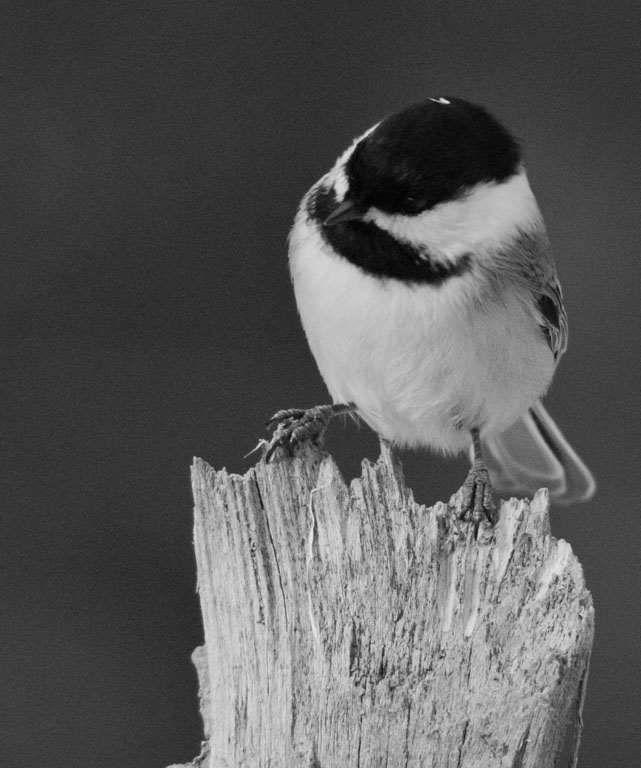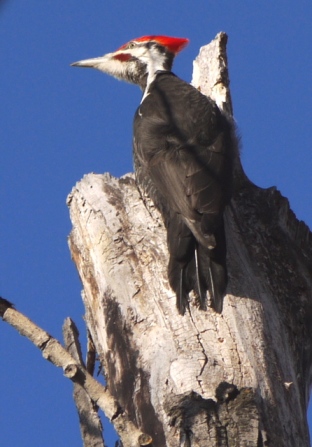Results of the CFNS Dawn Chorus, Weaselhead Natural Area, 0330-0715, 20June 2009. Clear sky, light fog, light wind, 10-12C. Seven participants. This year’s census was about ten days later than most previous years.
2008 results are supplied for comparison; CFNS Dawn Chorus; Weaselhead Natural Area. 0330-0745, 08 June 2008. Partly overcast, becoming complete, with light drizzle by end. NW wind, 15kph. Temp. 07-09C. Ten Participants.
In analyzing the data from the previous counts held in 2000, 2002, 2003, 2004, 2005; 2006, 2007 and 2008 total number of bird species detected before 6am respectively were: 39, 46, 37, 34, 27, 20, 31 and 28, but this year it was 33. This figure could signify many things; in 2005 we had a devastating flood that adversely affect the bird population of the Weaselhead. It could also have been affected by the weather, or that more of the participants had better hearing and identification skills.
New species added to the count for the first time were: Pied-billed Grebe, American Coot and Tennessee Warbler. Beavers have impounded more water, thus providing more wetland habitat.
A total of seven mammals were recorded on this morning’s early census.
The time and order of the first detection of each species, and the approximate numbers of each species are shown below. 2008 results are supplied for comparison.
Year /Time……………… Approx. # of individuals encountered.
[2009](2008) Species. (2008); [2009]
0330; 0420. Coyotes howling——–2+; 2+
0330; 0413. American Robin———25; 25
0337; 0336. Clay-colored Sparrow—10; 6
——; 0337. Boreal Chorus Frog——2; –
——; 0338. Small flying bat———–1; –
0354; 0335. White-throated Sparrow–6; 10
0359; 0400. Spotted Sandpiper———1; 1
——; 0359. Gray Catbird—————2; –
0400; 0405. Killdeer———————1; 1
0404; 0414. Yellow Warbler———-12; 15
0405; ——. Tennessee Warbler——- 0; 1
0407; 0500. House Wren—————6; 6
0408; 0709. American Wigeon——–2; 1
0409; ——. Am. Beaver—————0; 1
0409; 0408. Veery———————-10; 12
0417; 0426. Mallard, flying————-6; 1
0444; 0430. Common Goldeneye, f—5; 2+
0446; 0353. Lincoln’s Sparrow———4; 1
0449; 0403. Great Blue Heron———-1; 2
——; 0444. Chipping Sparrow———2, –
0450; ——; Bald Eagle—————–0; 2
——; 0450. Muskrat——————–3; –
0455; 0443. Sora————————-4; 1
0456; 0451. Least Flycatcher———–4; 6
0457; 0550. Ring-necked Pheasant—1; 2
0504; 0509. Red-winged Blackbird—8; 4
0504; ——; Red Squirrel————-0; 4
0515; 0650. Gull sp.——————–1; 30
0516; 0712. Tree Swallow————2; 9
0516; ——; American Coot———–0; 1
0521; ——, Franklin’s Gull———–0; 20
0522; ——; Pine Siskin—————-0; 4
0522; 0545. American Goldfinch—–8; 3
0527; 0526. Pileated Woodpecker—-1; 1
0530; 0544. Common Raven———-2; 2
0534; 0537. Northern Waterthrush—2; 1
0536; 0535. Eastern Phoebe———–2; 1
0540; ——; Pied-billed Grebe——–0; 1
0546: 0425. Black-capped Chickadee-1; 1
0548; 0650. Brown-head. Cowbird—2; 4
0551; 0620. Red-breasted Nuthatch–1; 1
0559; 0550. Red-eyed Vireo———-1; 1
0604; 0640. White-tailed Deer——1; 2
0610; ——; Swainson’s Thrush——-0; 1
0612; 0543. Rose-br. Grosbeak——-2; 2
——; 0612. American Crow———-1; –
0620; 0506. Canada Goose———–10; 1
0625; 0708. Least Chipmunk——–1; 2
——; 0630. Baltimore Oriole———2; 1
——; 0630. Hermit Thrush————1; –
0639; ——; Common Yellowthroat–0; 1
0640; 0630. Cedar Waxwing——–10; 4
0641; 0710. Blue-winged Teal——–4; 1
0646; ——; Red-naped Sapsucker—0; 1
——; 0648. Western Tanager———1; –
——; 0655. Orange-cr. Warbler——1; –
——; 0700. Northern Flicker———-1; –
0709; ——; Snowshoe Hare———0; 1
0710; 0730. Cliff Swallow————5; 100
——; 0712. Mourning Dove———-1; –
0713; 0740. Black-billed Magpie—-1; 1
0715; ——; Rich. Ground Squirrel-0; 6
I thank all participants who participated and whose hearing help to detect all the birds.
Gus Yaki









































